Text
POST-EDSA 1 REVOLUTION: 2 REMARKABLE FILIPINO WRITERS

Nicomedes Marquez Joaquin
Short biography:
Nick Joaquín was a Filipino writer born in 1917 to a prosperous and deeply Catholic family in Manila. Although his father was once a popular lawyer, their family fortune was lost in the 1920s. Nick dropped out of school and later worked at the Tribune publishing company. He gained recognition after World War II with the publication of his signature stories like "Summer Solstice" and "May Day Eve." He was also a public figure in Philippine letters and joined the Philippine Free Press in 1950. His notable works include the novel The Woman Who Had Two Navels and the play A Portrait of the Artist as Filipino. Nick Joaquín was conferred the rank and title of National Artist of the Philippines for Literature and considered one of the most important Filipino writers.
Contribution:
Nick Joaquín's contribution to Philippine literature includes his writings on the Spanish colonial period, exploration of the Filipino heritage, and the intricacies of human nature. He was honored as a national artist for literature in 1976.
Reference:
Nick Joaquin: The Biography. (n.d.). http://kathangpinoy.blogspot.com/2014/04/nick-joaquin-biography.html?m=1
Photo source: https://en.m.wikipedia.org/wiki/File:Nick_Joaquin_Portrait_from_Fringe.jpg
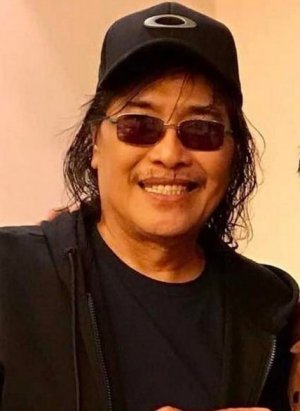
Carlo Magno Jose Caparas
Short biography:
Carlo Magno Jose Caparas (born December 15, 1948) is a Filipino comic strip creator, writer, film director, and producer. He is well-known for creating popular Filipino superheroes and comic book characters such as Panday, Bakekang, Totoy Bato, Joaquin Bordado, Kamagong, Kamandag, Elias Paniki, Tasya Fantasya, Gagambino, Pieta, and Ang Babaeng Hinugot sa Aking Tadyang. He is also recognized as a director of numerous films, including massacre films like Kuratong Baleleng and The Cory Quirino Kidnap: NBI Files. Caparas has received various awards and recognition for his contributions to Philippine popular culture, and he continues to be a prominent figure in the Philippine entertainment industry.
Contribution:
He is best known for creating such Filipino superheroes and comic book characters as Panday, Bakekang, Totoy Bato, Joaquin Bordado, Kamagong, Kamandag, Elias Paniki, Tasya Fantasya, Gagambino, Pieta and Ang Babaeng Hinugot sa Aking Tadyang, among others.
Reference:
Wikiwand - Carlo J. Caparas. (n.d.). Wikiwand. https://www.wikiwand.com/en/Carlo_Caparas
Photo source: https://mydramalist.com/people/42319-carlo-j-caparas
0 notes
Text
PERIOD OF THE THIRD REPUBLIC: 2 REMARKABLE FILIPINO WRITERS
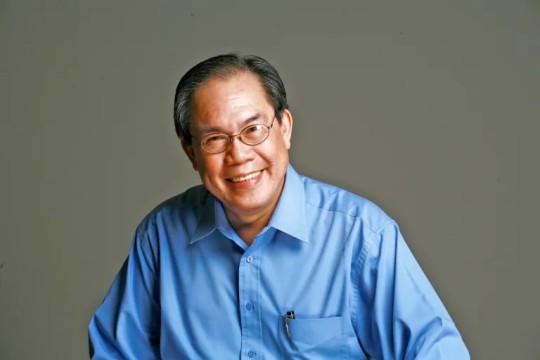
Jose Dalisay Jr.
Short biography:
Jose Dalisay is a renowned Filipino writer, professor, and Fulbright, Rockefeller Foundation, and British Council fellow. He has published over 25 books and received numerous awards, including 16 Don Carlos Palanca Memorial Awards for Literature. He earned his MFA in creative writing from the University of Michigan and Ph.D. in English from the University of Wisconsin-Milwaukee. He has also worked with international organizations such as the United Nations Development Programme and the World Bank. Dalisay will speak about political and economic developments and literary trends in the Philippines during his residency.
Contribution:
Since 1984, Dalisay has written over 30 books and received six National Book Awards from the Manila Critics Circle. In 1998, he was included in the Cultural Center of the Philippines (CCP) Centennial Honors List as one of the top 100 most accomplished Filipino artists of the past century.
Reference:
Jose Dalisay. (n.d.). https://ccgt.ucsd.edu/fellows/past/dalisay.html
Photo source: https://up.edu.ph/josedalisaylarge/

Azucena Grajo Uranza
Short biography:
Azucena Grajo Uranza was born in Sorsogon, Sorsogon, and later graduated from the Far Eastern University of the Philippines, obtaining a Bachelor of Arts in Journalism in 1952 and a Master of Arts in English in 1969. In addition to being a writer, she also worked as an associate professor of Literature and the Humanities at the same university. Uranza was a versatile playwright, creating works for the theater, radio, and television, and her plays were performed on Channel 4 (TV), DZRH (radio), and at the Far Eastern University.
Contribution:
Azucena Grajo-Uranza is a noted Filipino writer who has made significant contributions to Philippine Literature with her award-winning works, such as the Palanca Grand Prize winner Bamboo in the Wind (1990) and the Centennial Literary Prize recipient A Passing Season (2002), among others. She is also a versatile playwright and an accomplished professor of Literature and Humanities at the Far Eastern University in the Philippines.
Reference:
Wikipedia contributors. (2023b). Azucena Grajo Uranza. Wikipedia. https://en.m.wikipedia.org/wiki/Azucena_Grajo_Uranza
Photo source: https://www.carousell.ph/p/bamboo-in-the-wind-azucena-grajo-uranza-with-highlights-1100131142/
0 notes
Text
PERIOD OF THE NEW SOCIETY: 2 REMARKABLE FILIPINO WRITERS

Aniceto Silvestre
Short biography:
Aniceto F. Silvestre was born on April 17, 1878, in San Mateo (now in the province of Rizal). Although he did not have formal training in writing, he was able to contribute to Philippine literature by writing beautiful poems, short stories, novels, and essays. His poems, collected in the organization Kalikasan, were grouped into eight: Malaya, Maalindog, Larawan ng Buhay, Pintig ng Pag-ibig, Tatag ng Pananalig, Tanda ng Pag-asa, Bukas sa Landas ng Kadakilaan, and Dugo sa Ningning ng Araw. Aniceto F. Silvestre received several awards for his poetry writing, including four First Prizes (before the war), a Third Prize (during the Commonwealth government), another First Prize (during the 10th year of the Republic of the Philippines), and a First Prize in the Palanca Memorial Awards for Literature in 1969.
Contribution
He wrote eight collections of poetry, including "Malaya," "Maalindog," and "Bukas sa Landas ng Kadakilaan," which won several literary awards. His works often reflected the struggles and aspirations of the Filipino people during his time.
Reference:
Contributors to Wikimedia projects. (2022). Aniceto Silvestre. Wikipedia, Ang Malayang Ensiklopedya. https://tl.m.wikipedia.org/wiki/Aniceto_Silvestre
Photo source: http://bsit1a-pilipinas-sining-panitikan.blogspot.com/p/blog-page.html?m=1

Ponciano Pineda
Short biography:
Ponciano Pineda is a Filipino writer, teacher, linguist and lawyer, known as the "Father of the Commission on Filipino Language" for his efforts to establish a commission based on the Philippine Constitution. He became director of the Commission on the Filipino Language in 1971 and initiated socio-linguistic research, including orthographic reform and language policy changes. Pineda established 12 regional centers for the Filipino language and published dictionaries that served as the foundation of national lexicography. He is also an expert in Filipino culture and has written academic books and literary works, including award-winning short stories.
Contribution:
Ponciano Pineda wrote books on communication, including “Pagpupulong: Mga Tuntunin At Pamamaraan,” “Pandalubhasaang Sining Ng Komunikasyon” and “Sining Ng Komunikasyon Para Sa Mataas Na Paaralan.” He also won the first and second prize for his short stories “Ang Mangingisda” (1958) and “Malalim ang Gabi” (1953) in the Gawad Palanca literary contest.
Reference:
Wikipedia contributors. (2023c). Ponciano B. P. Pineda. Wikipedia. https://en.m.wikipedia.org/wiki/Ponciano_B._P._Pineda
Photo source: https://www.slideshare.net/MoniqueBalansag/paghahambing-samgakilalangkritikosapilipinas
1 note
·
View note
Text
PERIOD OF ACTIVISM: 2 REMARKABLE FILIPINO WRITERS
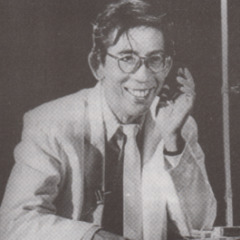
Rolando S. Tinio
Short biography:
Rolando Santos Tinio was a versatile Filipino artist who excelled in various fields such as poetry, drama, acting, directing, criticism, and education. He was recognized as a National Artist for Theater and Literature in the Philippines. Tinio was known for his exceptional skills as a stage director, and he was able to revive traditional Filipino drama during his tenure at Teatro Pilipino. He was born in Manila in 1937, and he showed an interest in organizing and directing at a young age. Tinio was also a film actor and screenwriter. He graduated with a degree in Philosophy from the Royal and Pontifical University of Santo Tomas, and he later obtained his M.F.A. degree in Creative Writing from the University of Iowa. He taught English, Filipino, and theater arts at Ateneo de Manila University from 1958 to 1975. Tinio was married to actress Ella Luansing. He died in 1997 while directing a musical at the age of 60, and his wife passed away years later.
Contribution:
Rolando Tinio's contribution to Philippine poetry was introducing "Taglish," which gave an authentic tone to the poetry of the middle-class Filipinos. In his 1972 poetry collection, Sitsit sa Kuliglig, he demonstrated a significant shift in his advocacy.
Reference:
Monde, J. (2022, March 2). Rolando Tinio Biography - Life Story Of Famous Filipino Poet. Philippine News. https://philnews.ph/2022/03/02/rolando-tinio-biography-life-story-famous-filipino-poet/
Photo source: https://secondhandsongs.com/artist/127941/all

Rogelio Mangahas
Short biography:
Rogelio Mangahas was a celebrated Filipino poet and artist who played a key role in the modernist movement of Filipino poetry. He won numerous accolades for his poetry and critical essays, including the prestigious Palanca Awards. He also co-edited an important anthology of poems and worked as an editor-in-chief for several publishing houses. Additionally, he taught Filipino language and literature at various universities and received recognition for his contributions to Filipino literature.
Contribution:
Rogelio Mangahas worked as a literature consultant for the Cultural Center of the Philippines and was a country editor for Tenggara, a literary journal of Southeast Asia. He received notable awards such as the 'Poet of the Year' from SWP and the Gawad Pambansang Alagad ni Balagtas from UMPIL for his contributions to Filipino literature.
Reference:
Wikipedia contributors. (2022b). Rogelio Mangahas. Wikipedia. https://en.m.wikipedia.org/wiki/Rogelio_Mangahas
Photo source: https://www.rappler.com/life-and-style/arts-culture/206452-filipino-poet-rogelio-mangahas-death/
0 notes
Text
PHILIPPINE LITERATURE IN ENGLISH: 2 REMARKABLE FILIPINO WRITERS
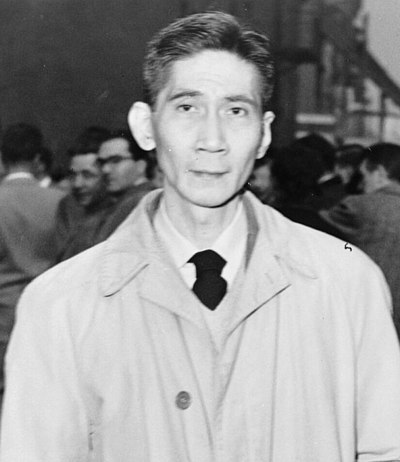
Jose Garcia Villa
Short biography:
Jose Garcia Villa (August 5, 1908 – February 7, 1997) was a multi-talented Filipino artist who excelled in various fields such as poetry, literary criticism, short story writing, and painting. He was recognized for his literary contributions by being awarded the National Artist of the Philippines title for literature in 1973 and a Guggenheim Fellowship in creative writing. Villa is known for his unique writing style, which includes the use of the "reversed consonance rhyme scheme" and an extensive use of punctuation marks, particularly commas, leading him to be dubbed as the Comma Poet. Villa used the pen name Doveglion, which was derived from the animals Dove, Eagle, and Lion featured in his works. His contributions were recognized by other poets, such as E. E. Cummings, who dedicated a poem to Villa titled "Doveglion, Adventures in Value."
Contribution:
Jose Garcia Villa was a Filipino poet who won the National Artist of the Philippines title for literature in 1973. He challenged traditional poetic styles and his innovative writing continues to influence modern poetry within and beyond the Philippines.
Reference:
Wikipedia contributors. (2023a). José García Villa. Wikipedia. https://en.m.wikipedia.org/wiki/Jos%C3%A9_Garc%C3%ADa_Villa
Photo source: https://en.m.wikipedia.org/wiki/File:Jose_Garcia_Villa_NYWTS.jpg

Paz Marquez Benitez
Short biography:
Paz Marquez Benitez (March 3, 1894 – November 10, 1983) was a Filipino writer, editor, and educator who made significant contributions to the advancement of women in professional careers and Philippine literature. Her short stories were critical of American Imperialism, and her most famous work, Dead Stars, used allegories to depict the decline of Philippine heritage. Although she only had two published works, her impact as an educator and editor was substantial, as she inspired many Filipino writers through her establishment of educational magazines, schools, and creative writing courses.
Contribution:
"Dead Stars" is Marquez-Benitez's most famous work. It is the first ever modern short story in English from the Philippines. It gave birth to modern Philippine writing in English when it was released in 1925 because English was still a very young language at that time.
Reference:
Wikipedia contributors. (2023b). Paz Márquez-Benítez. Wikipedia. https://en.m.wikipedia.org/wiki/Paz_M%C3%A1rquez-Ben%C3%ADtez
Photo source: http://literaryworksinphilippineliterature.blogspot.com/2016/10/dead-stars-by-paz-marquez-benitez.html?m=1
0 notes
Text
THE JAPANESE PERIOD: 2 REMARKABLE FILIPINO WRITERS
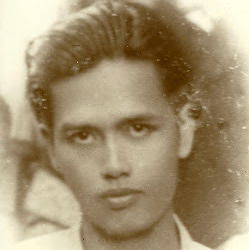
Macario Pineda
Short biography:
Macario Pineda was born in Malolos, Bulacan on April 10, 1912 and passed away at the age of thirty-eight on August 2, 1950. He had a difficult childhood as his mother, Felisa de Guzman, died when he was young and his father, Nicanor Pineda, remarried and had seven daughters with his stepmother Marcelina Alcaraz. Despite owning land, Pineda didn't choose to become a farmer, and after finishing high school, he worked as a telephone lineman and later as a municipal clerk. He was an excellent writer and basketball player during his high school years. At the age of twenty, he got married and settled in Barrio San Juan, Bigaa, Bulacan. He and his wife had seven children. Pineda's early life experiences, including the loss of his mother, influenced his views on women and mothers, which is evident in his writing.
Contribution:
Macario Pineda was a writer who wrote extensively in Tagalog from 1943 until his death in 1950. He was known for his numerous novels and short stories, including Halina sa Ating Bukas (1945), Ang Ginto sa Makiling (1947), Magat (1948), and Isang Milyong Piso (1950).
Reference:
A Brief Biography of Macario Pineda. (n.d.). Love in the Rice Fields - Dreame. https://m.dreame.com/chapter/1/1693925376/name
Photo source: https://www.goodreads.com/author/show/1930514.Macario_Pineda

Carlos P. Romulo
Short biography:
Carlos P. Romulo, in full Carlos Peña Romulo, (born January 14, 1899, Camiling, Philippines—died December 15, 1985, Manila), was a Philippine general, diplomat, and journalist who served as an aide-de-camp to U.S. Gen. Douglas MacArthur during World War II. He became known as the "Voice of Freedom" for his broadcasts after Japan attacked the Philippines. Romulo won the Pulitzer Prize for Peace in 1941 and later served as president of the General Assembly of the UN and as the Philippines' ambassador to the United States. He also served as president of the University of the Philippines, secretary of education, and secretary of foreign affairs. However, in his later years, Romulo's views became less democratic, and he supported Marcos's imposition of martial law. His autobiography, I Walked with Heroes, was published in 1961.
Contribution:
Carlos P. Romulo was a prolific writer who authored and published 18 books, covering a range of literary genres. Some of his notable works include a novel called "The United," an autobiography titled "I Walked with Heroes," and memoirs about the war such as "I Saw the Fall of the Philippines" and "Mother America." He also wrote about the Philippines' rise in his book "I See the Philippines Rise."
Reference:
The Editors of Encyclopaedia Britannica. (2023, May 1). Pulitzer Prize | History, Winners, & Facts. Encyclopedia Britannica. https://www.britannica.com/topic/Pulitzer-Prize
Photo source: https://war.m.wikipedia.org/wiki/Paypay:Carlos_Romulo.jpg
1 note
·
View note
Text
THE AMERICAN REGIME: 2 REMARKABLE FILIPINO WRITERS

Lope K. Santos
Short biography:
Lope K. Santos was a prominent Filipino Tagalog-language writer, lawyer, and politician who contributed significantly to the development of Filipino language and literature. He is best known for his 1906 novel "Banaag at Sikat," which introduced socialist ideas in the Philippines and inspired labor reforms. Santos was also a strong advocate for promoting a national language and modernizing Tagalog grammar and orthography. He served as governor of Rizal and Nueva Vizcaya provinces, and was elected as a senator in the Philippine Legislature. Santos published the first grammar book of the national language, and later served as director of the Surian ng Wikang Pambansa. He died in 1963 at the age of 86.
Contribution:
Lope K. Santos is best known for his 1906 socialist novel, Banaag at Sikat and for his contributions for the development of Filipino grammar and Tagalog orthography, which helped to modernize and standardize the language.
Reference:
Lope K. Santos. (n.d.). Penguin Books Australia. https://www.penguin.com.au/authors/lope-k-santos
Photo source: http://archive.upslis.info/lopeksantos/fatherfilipinogrammar.html
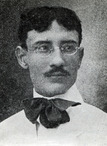
Jesus Balmori
Short biography:
Jesús Balmori y González-Mondragón was a celebrated Filipino poet and writer who was born in Manila in 1887. He studied Literature at Colegio de San Juan de Letrán and the University of Santo Tomás. Balmori won literary awards and prizes for his poetry at a young age and was a notable performer in Balagtasan, a poetic competition. He wrote a column called "Vida Manileña" for La Vanguardia, using the pseudonym "Batikuling", which was a critique of society's power elite. After the war, he continued to write a similar column, "Vida Filipina", for the Voz de Manila. Balmori's fame and reputation as a writer rested mainly on his work as a lyric poet. He was married to Dolores Rodríguez, and his brother Joaquín Balmori was a prominent labor leader in the Philippines.
Contribution:
He wrote three novels: Bancarrota de Almas (Failure of the Soul), Se Deshojó la Flor (I Tear The Pages Out of The Flower), and Pájaros de Fuego (Birds of Fire) which was completed during the Japanese occupation.
Reference:
Wikipedia contributors. (2022). Jesús Balmori. Wikipedia. https://en.m.wikipedia.org/wiki/Jes%C3%BAs_Balmori
Photo source: https://aprilmaynjune.weebly.com/lit-1/the-american-regime-1898-1941
1 note
·
View note
Text
PERIOD OF ENLIGHTENMENT: 2 REMARKABLE FILIPINO WRITERS
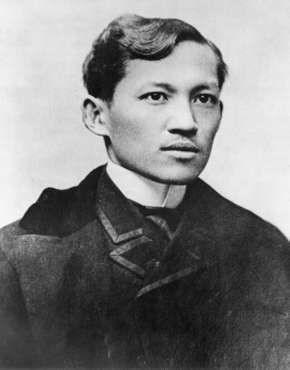
Jose Protacio Rizal Mercado y Alonso Realonda.
Short biography:
José Rizal was a Filipino patriot, physician, and writer who worked towards reforming Spanish rule in the Philippines. He wrote extensively on the evils of Spanish rule and became the leader of the Propaganda Movement, contributing to its newspaper, La Solidaridad. Rizal's political program aimed for integration of the Philippines as a province of Spain, representation in the Cortes, and equality between Filipinos and Spaniards before the law. He founded the Liga Filipina, a nonviolent-reform society, but was deported to Dapitan for four years. In 1896, he was arrested and executed for sedition, which inspired Filipinos to fight for independence.
Contribution:
Jose Rizal was a prolific poet, essayist, and novelist whose most famous works were his two novels, Noli Me Tángere (1887) and its sequel, El filibusterismo (1891).
Reference:
The Editors of Encyclopaedia Britannica. (1998, July 20). Jose Rizal | Biography, Education, Works, Full Name, & Facts. Encyclopedia Britannica. https://www.britannica.com/biography/Jose-Rizal
Photo source: https://pin.it/6S5LpLn
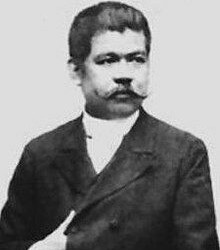
Marcelo Hilario del Pilar y Gatmaitán
Short biography:
Marcelo H. Del Pilar was born in Bulacan in 1850, studied law and became a defender of the oppressed victims of racial discrimination. He founded Diariong Tagalog in 1882 to promote liberal democratic ideas among farmers and peasants. Del Pilar went to Spain in 1888 and became editor of La solidaridadin Madrid, advocating for the removal of friars and wider political and social freedoms for Filipinos. He died in 1896, rejecting assimilationist ideas and planning for armed revolt. His progressive outlook was influenced by the French Enlightenment and European bourgeoisie, as well as Freemasonry.
Contribution:
Marcelo H. del Pilar was a key figure in the Philippine anti-friar movement. He wrote articles that inspired Filipinos to defy the friars' authority and control over the country.
Reference:
Wikipedia contributors. (2023). Marcelo H. del Pilar. Wikipedia. https://en.m.wikipedia.org/wiki/Marcelo_H._del_Pilar
Photo source: https://pin.it/13yM6Tf
1 note
·
View note
Text
POST EDSA REVOLUTION CONTRIBUTION IN THE PHILIPPINE LITERATURE

The fall of the Marcos dictatorship in 1986 marked a turning point in contemporary Philippine literature, as writers gained greater freedom to express themselves. Writing during the Martial Law regime was characterized by militancy and belligerence, derived from the political culture of the underground national democratic movement. After the regime fell, the literary scene became disoriented, resulting in a proliferation of concerns taken up by individual writers and groups. However, the emergence of creative writing centers and writers' organizations, as well as the creation of the National Commission for Culture and the Arts in 1992, helped to provide support for writers and foster a "national literature." Non-governmental organizations also played a role in recognizing writers from specific sectors of society. Campus publications provided another outlet for non-traditional, experimental writing. Post-EDSA literature is characterized by an emerging critical orientation, adventurousness in publishing, and a focus on the retrieval and recuperation of writing in Philippine languages. Contemporary literature uses English and Filipino as major media, and explores themes ranging from socio-political discussions to personal thoughts and feelings. Literature is a venue for the search for identity, as well as the exploration of issues like human rights violations, the experiences of overseas Filipino workers and migrants, and the effects of poverty and power dynamics. The post-EDSA revolution contributed significantly to the development of Philippine literature, creating an environment where writers could tackle a wide range of subjects reflecting the socio-political realities of the country. Overall, the post-EDSA literary scene is marked by an adventurous and critical spirit, with an emphasis on exploring a wide range of issues and using literature as a tool for self-expression and social commentary.
Reference:
Philippine Literature After EDSA Revolution. (n.d.). https://www.slideshare.net/JessPalo1/litt-1-report
Photo source: https://en.m.wikipedia.org/wiki/File:EDSA_Revolution_pic1.jpg
3 notes
·
View notes
Text
THE NEW SOCIETY

The period of the New Society in the Philippines began on September 21, 1972, under the leadership of Ferdinand Marcos. During this time, efforts were made to promote Filipino literature and culture. The Don Carlos Palanca Memorial Awards for Literature continued to recognize outstanding Philippine writers, while attempts were made to discourage pornography and other forms of literature deemed to have negative moral influences. The government played a significant role in reviving traditional plays such as the Tagalog Zarzuela, Cenaculo, and Embayoka of the Muslims. Filipino poetry during this period often focused on themes of patience, cultural traditions, and appreciation for nature. Additionally, radio and television remained popular, and the annual Pista ng mga Pelikulang Pilipino showcased Filipino films. Many performing artists in radio moved over to television because of higher pay. Moreover, organizations such as PETA, Repertory Philippines, UP Repertory, and Teatro Filipino contributed significantly to the development of plays during this time. Meanwhile, newspapers shifted their focus to news on economic progress, culture, and tourism, and bilingual education led to a renewed focus on national identity and resolving societal problems. Overall, the New Society period was marked by a renewed appreciation for Filipino culture and an emphasis on national identity. While efforts were made to promote literature and the arts, the government also sought to maintain moral standards through censorship and regulation. Despite its challenges, this era left a lasting impact on Philippine society and culture.
Reference:
The Period of Activism and the New Society. (2014, November 3). Philippine Literature. https://group4lit1webpage.wordpress.com/period-of-activism-and-the-new-society/
Photo source: https://group4lit1webpage.files.wordpress.com/2014/11/download-3.jpg
1 note
·
View note
Text
THE PHILIPPINE LITERATURE DURING ACTIVISM PERIOD

In the time of activism, bold and bright,
Philippine literature came to light
Voices raised, speaking truth with might
Against oppression, they chose to fight
The pen became their sword and shield
With every word, they refused to yield
Their stories, a weapon to reveal
Injustice, that they would never conceal
From campuses to streets, they took a stand
Their voices echoed throughout the land
Their message clear, a demand
For freedom and justice to expand
Aristocratic writers, eyes opened wide,
To social awareness, they could no longer hide,
Pens in hand, red paint on placards,
Demanding change, against cowardice bombard.
With fervent passion, they wrote on
Tales of courage, resistance, and dawn
Their words, a powerful lexicon
For a nation that refused to be withdrawn
With the establishment as the target,
Youth's frustrations found their outlet,
Even priests, parents, and teachers,
Were seen as hindrances, not as leaders.
Their stories remain a testament
To a time of struggle and ferment
Philippine literature in activism's time,
A mirror of society's radical climb,
Reflecting youth's passion and pain,
Their spirit, a beacon that shall remain.
Photo source: https://group4lit1webpage.files.wordpress.com/2014/11/download-2.jpg
2 notes
·
View notes
Text
Tanaga # 5

PARENT'S LOVE
A pure and a selfless love,
Ever strong, forever there,
Bond that will all time endure,
Lifelong love, always secure.
Photo source: https://pin.it/2KFQ8EC
1 note
·
View note
Text
Tanaga # 4

FRIENDSHIP'S BOND
Bonds of a friendship unite ,
A true treasure to behold,
Constant, standing firm and tight,
Never losing its stronghold.
Photo source: https://pin.it/4C4TdyW
0 notes
Text
Tanaga # 3

DREAMS AND ASPIRATIONS
Dreams and hopes within our heart,
With us, never far apart
Potential that lies within
Our passions will always win.
Photo source: https://pin.it/6u9COtQ
0 notes
Text
Tanaga # 2

Childhood Memories
Innocent joy, heart's delight,
Purest memories, in sight,
Love's embrace, forever bright,
Treasured moments, day and night.
Photo source: https://pin.it/6okpWXA
0 notes
Text
Tanaga # 1

NATURE'S BEAUTY
Nature's beauty, all around,
In breeze, leaves rustle with sound
Streams that gurgle through the grounds,
A sight that calms, peace is found
Photo source: https://pin.it/3vIxVrE
2 notes
·
View notes
Text
Haiku # 5

A HUG
Arms open wide, love,
Heartfelt embrace, warm and tight,
Souls entwine in hug.
Photo source: https://pin.it/3fDDqdp
1 note
·
View note